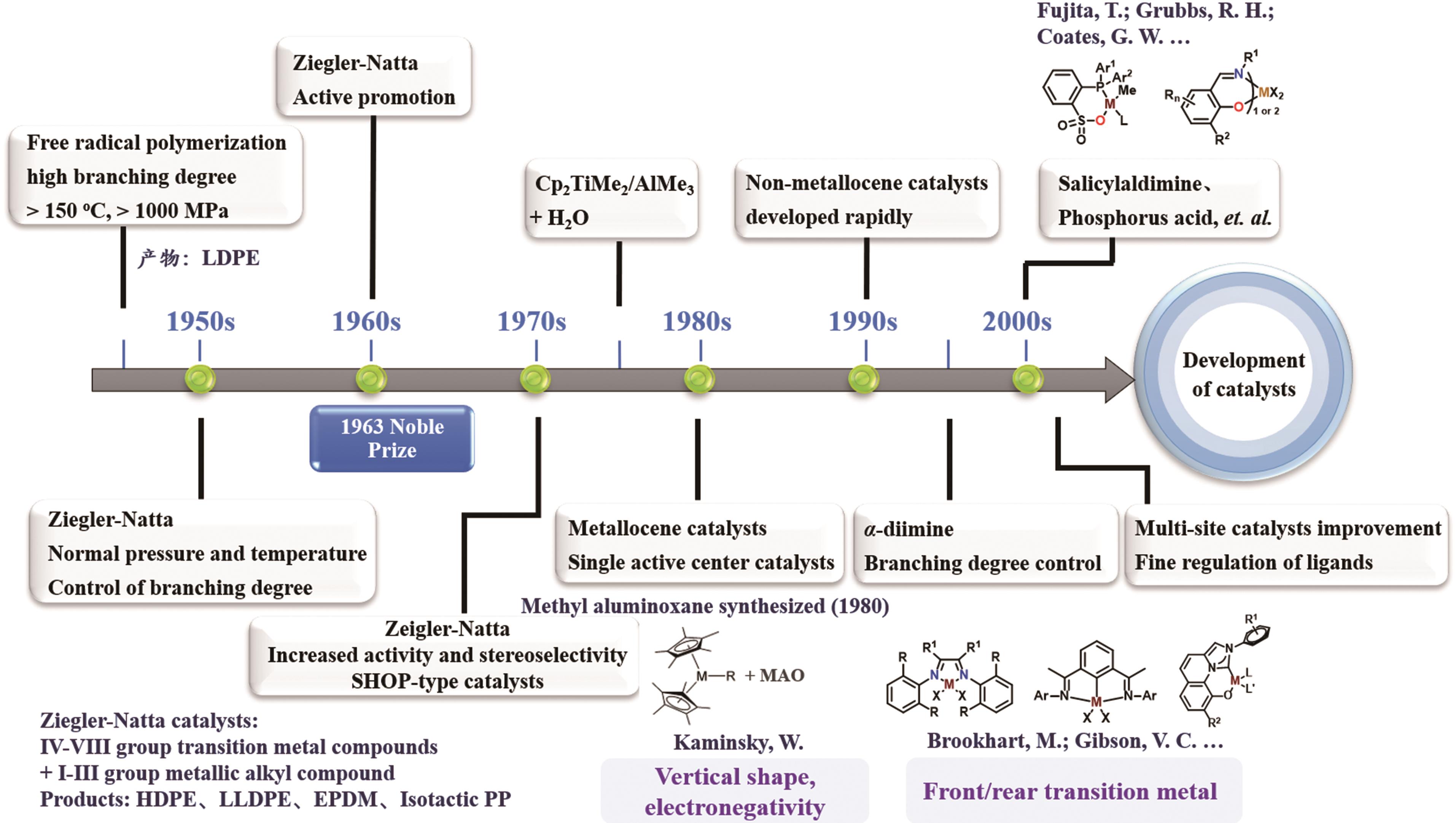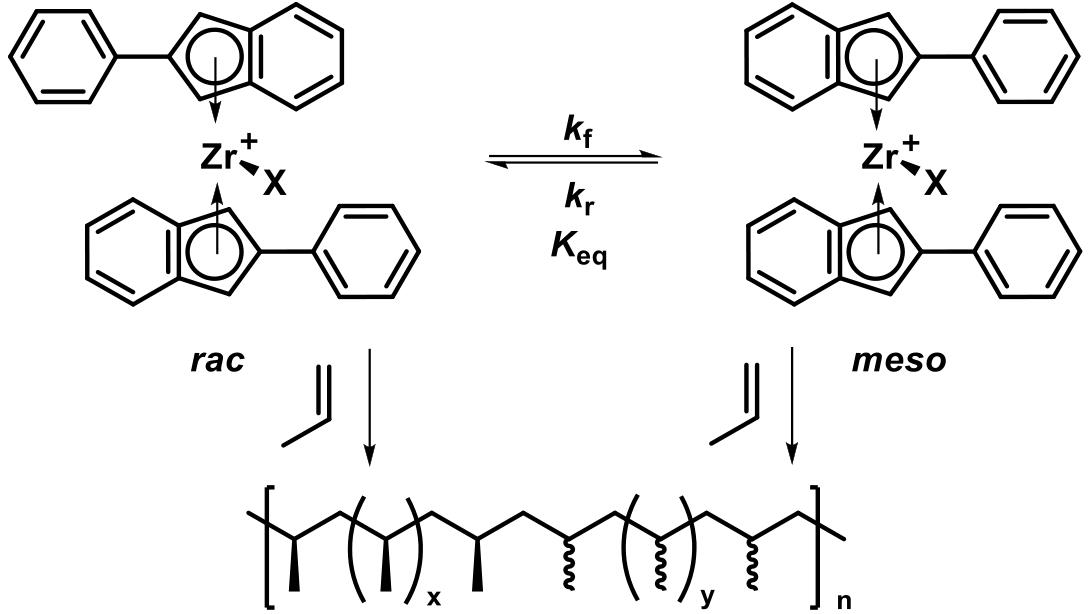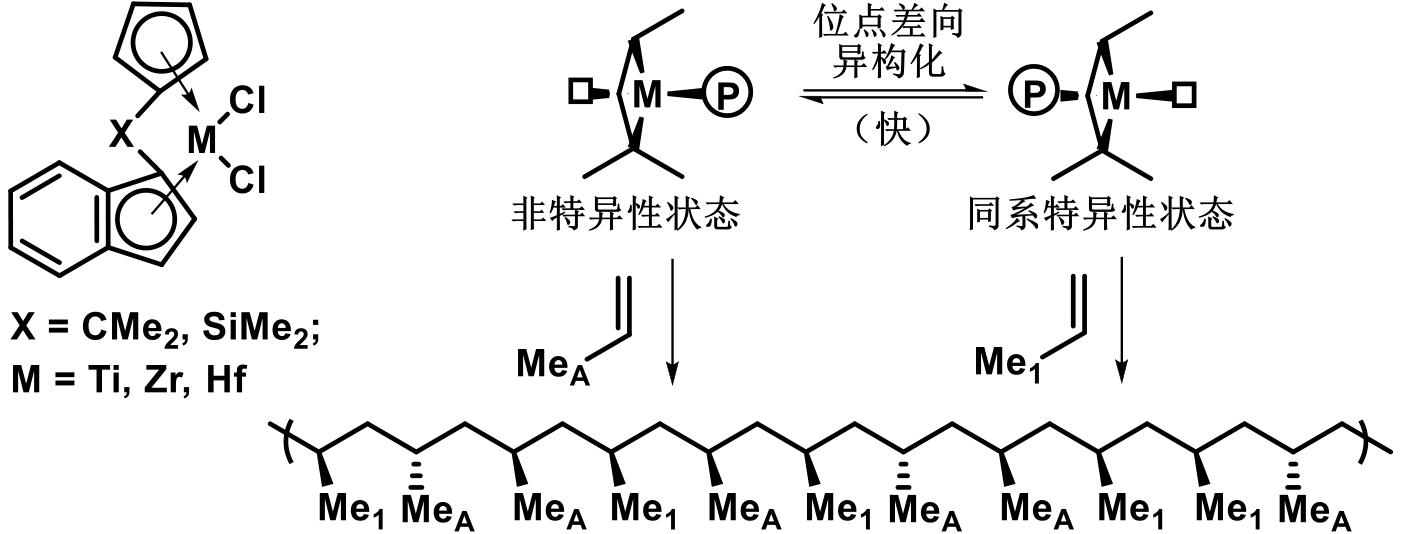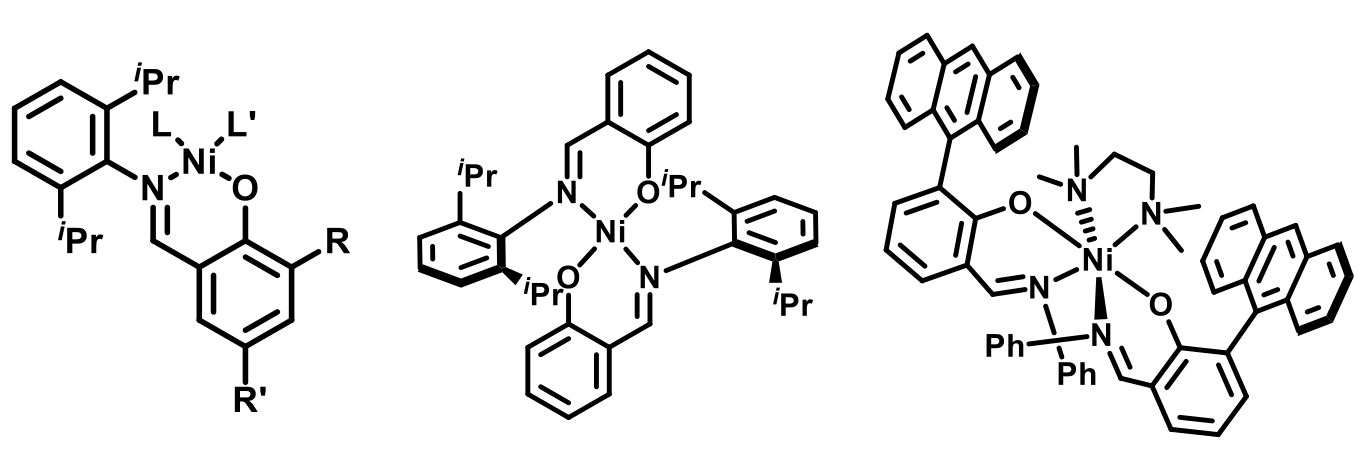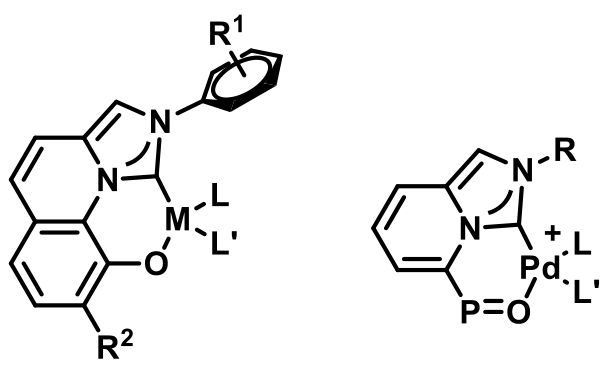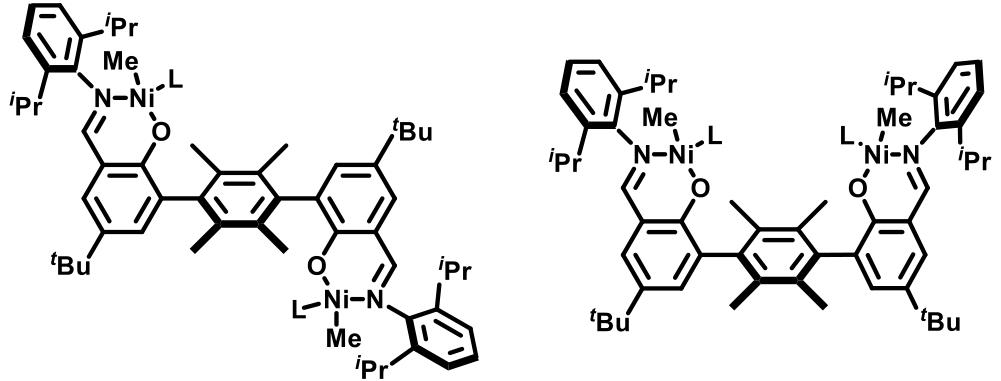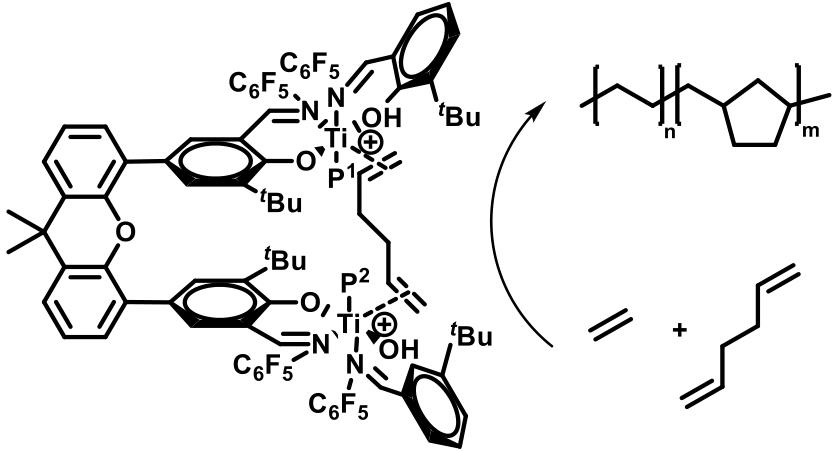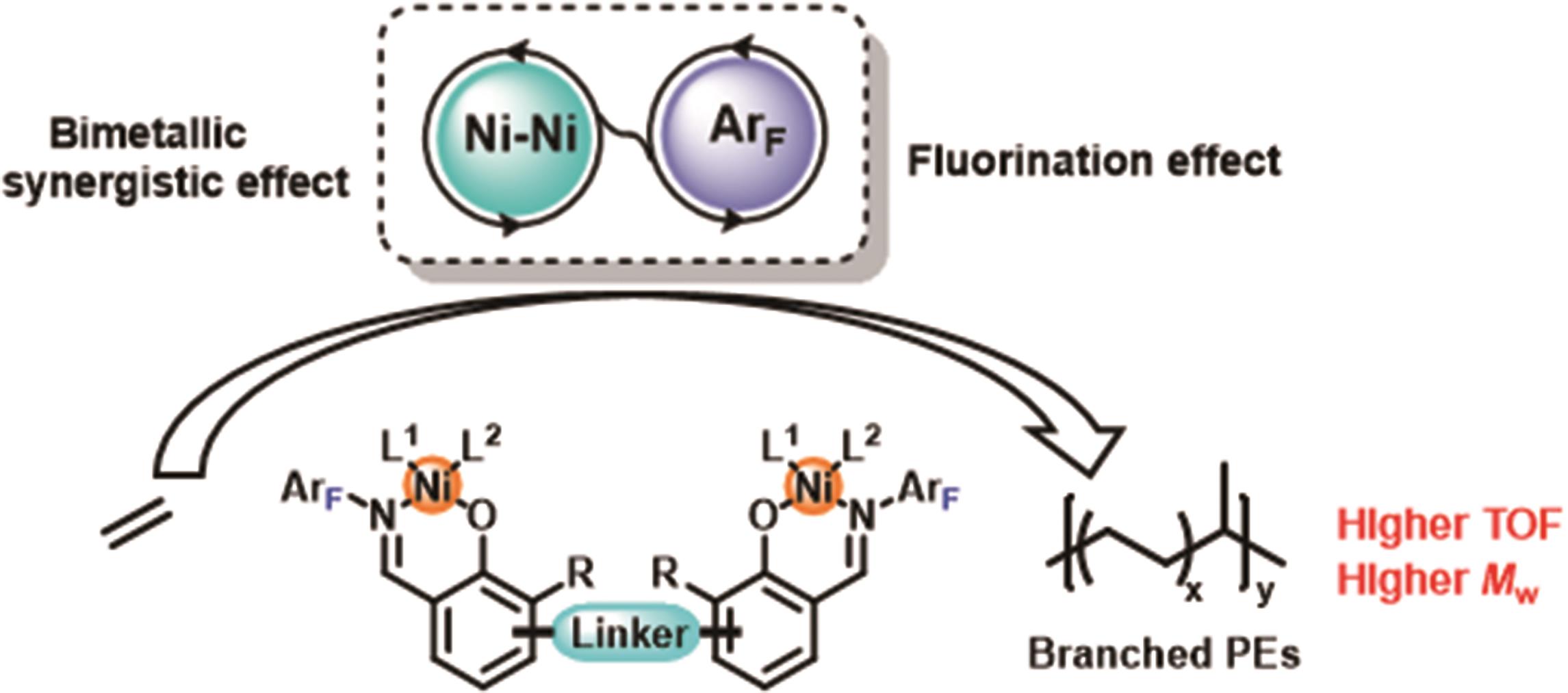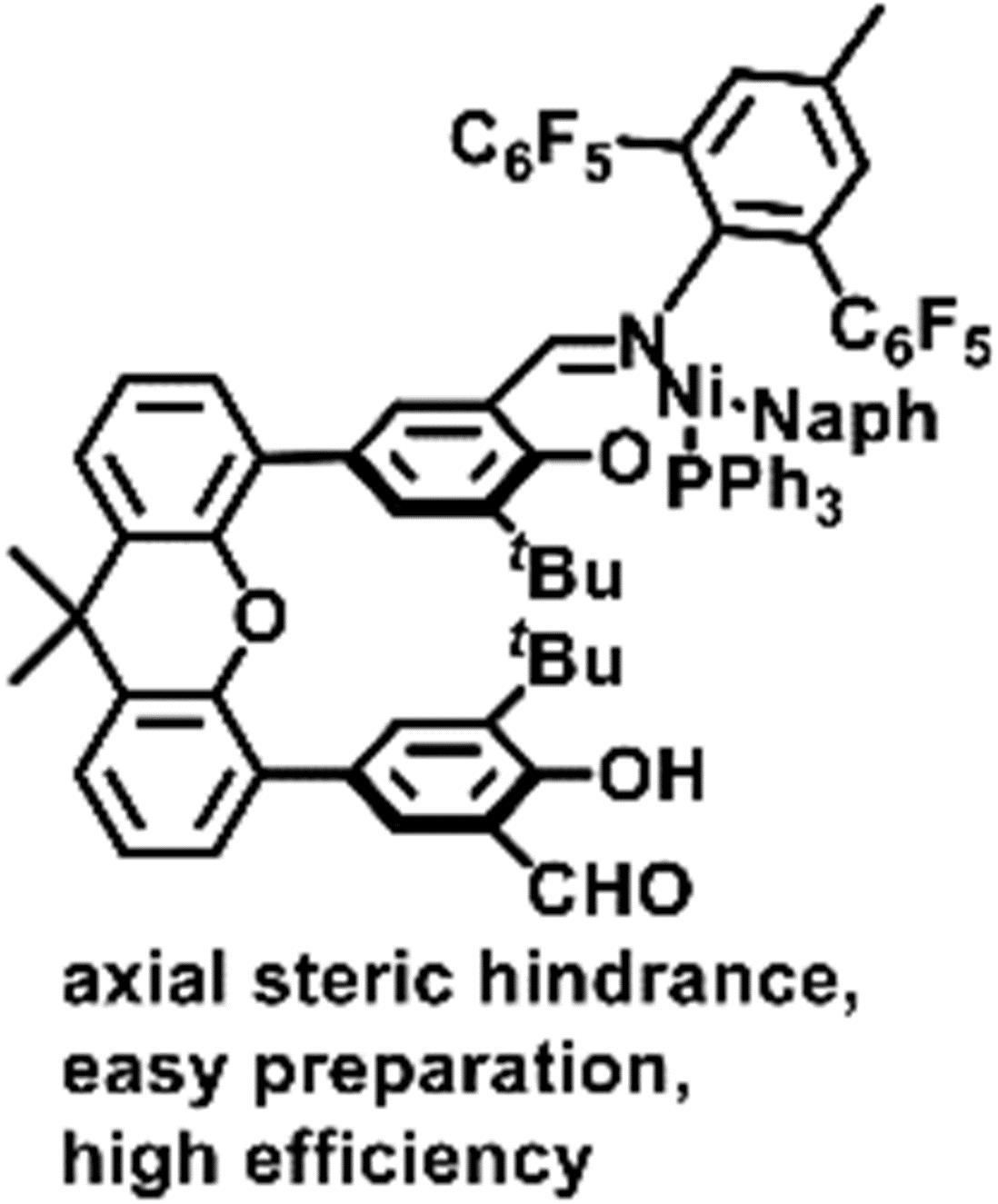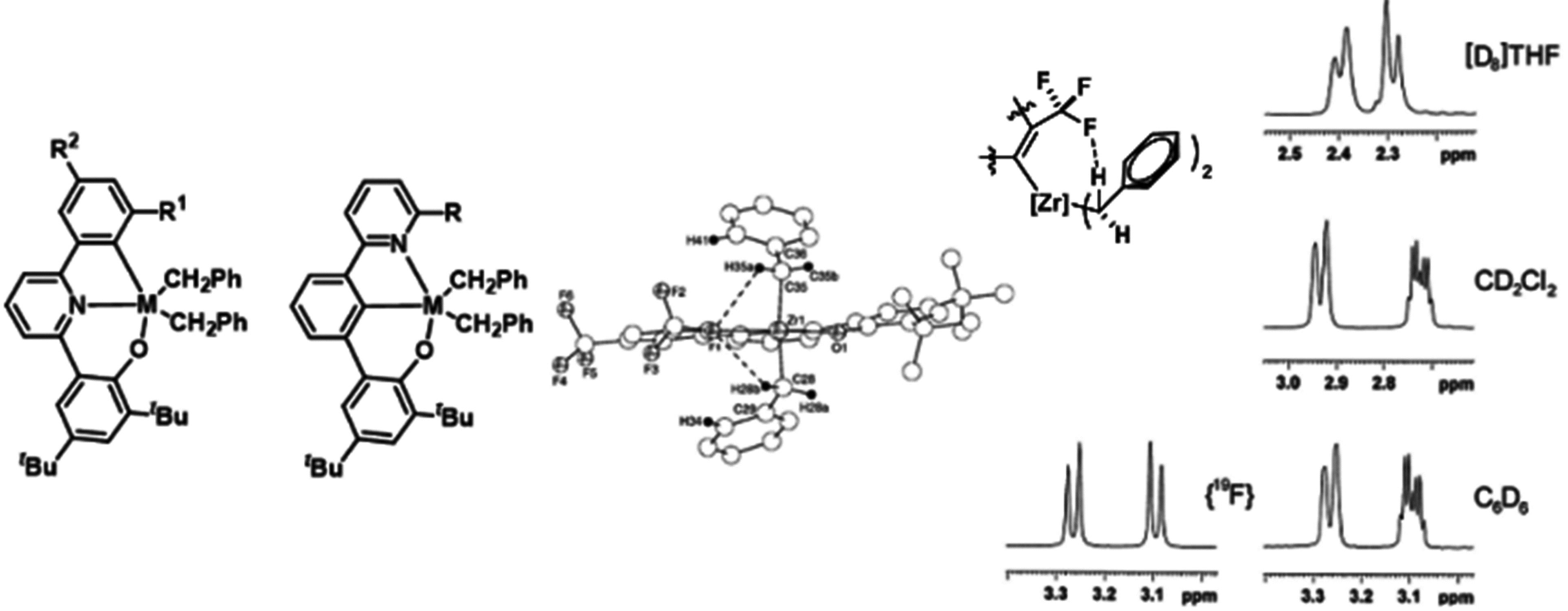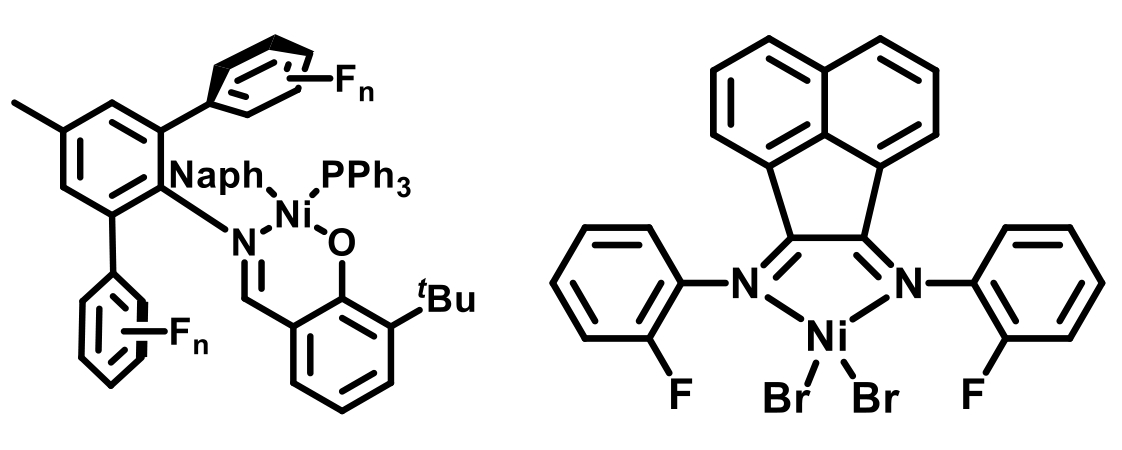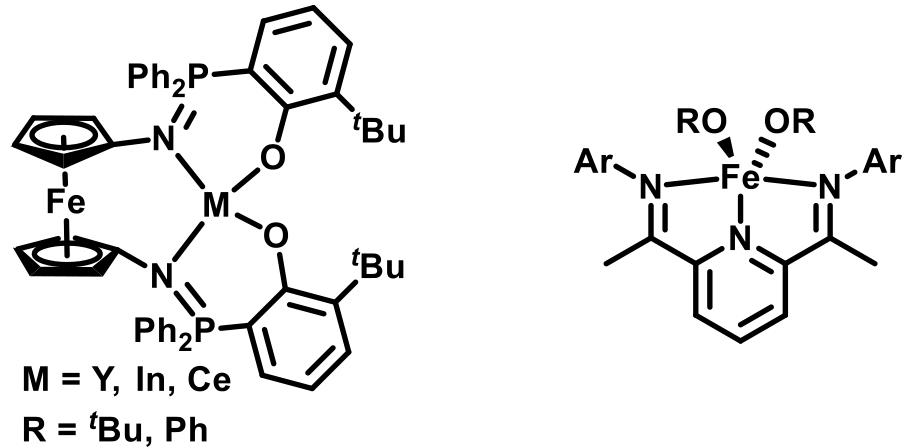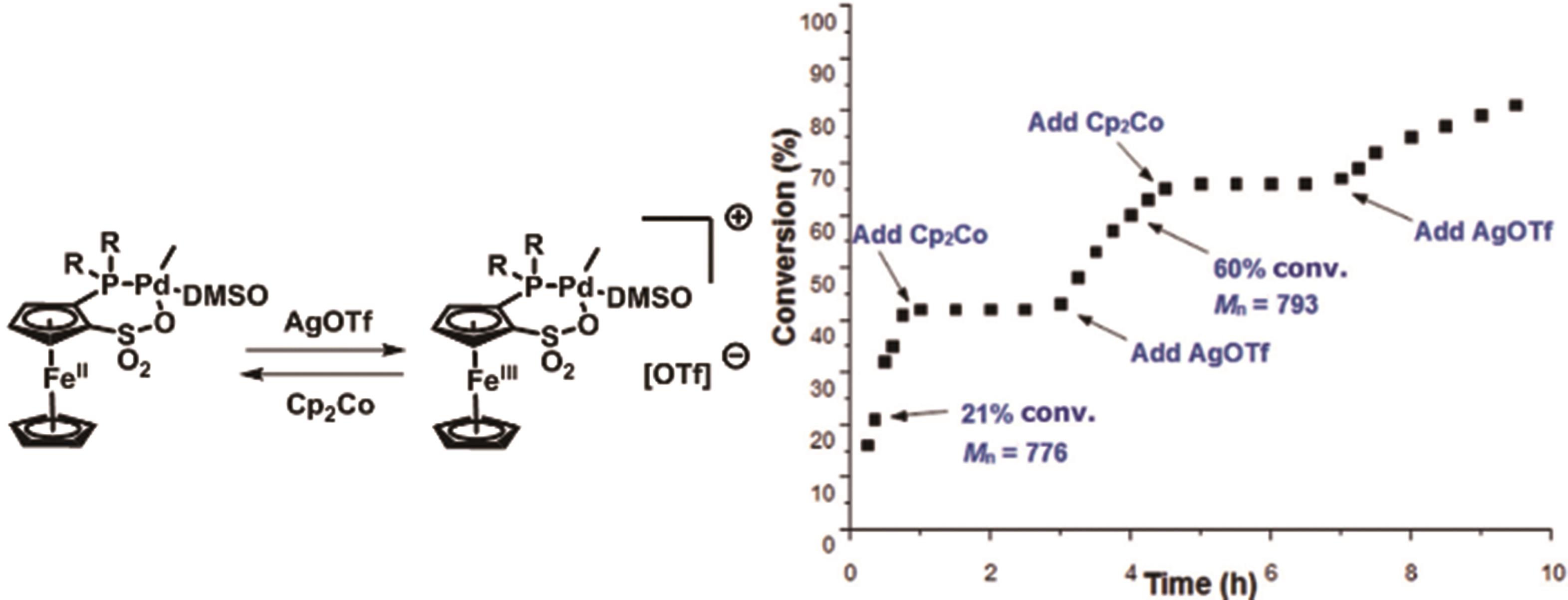
Chinese Journal of Applied Chemistry ›› 2022, Vol. 39 ›› Issue (3): 355-373.DOI: 10.19894/j.issn.1000-0518.210170
• Review • Next Articles
Research Progress of Olefin Polymerization Catalysts
Di XU, Li DAI( ), Wen-Zhi YAO, Guang-Rui YANG, Hai-Rong WANG, Peng-Fei SONG, Yan-Song ZHU
), Wen-Zhi YAO, Guang-Rui YANG, Hai-Rong WANG, Peng-Fei SONG, Yan-Song ZHU
- School of Environmental and Municipal Engineering,North China University ofWater Resources and Electric Power,Zhengzhou 450046,China
-
Received:2021-04-06Accepted:2021-08-13Published:2022-03-01Online:2022-03-15 -
Contact:Li DAI -
About author:daili@ncwu.edu.cn
-
Supported by:the Natural Science Foundation of Henan Province(202300410273);the Key Scientific Research Projects of Colleges and Universities in Henan Province(21A150031);the High?level Talent Launch Project of North China University of Water Resources and Electric Power(4001/40590)
CLC Number:
Cite this article
Di XU, Li DAI, Wen-Zhi YAO, Guang-Rui YANG, Hai-Rong WANG, Peng-Fei SONG, Yan-Song ZHU. Research Progress of Olefin Polymerization Catalysts[J]. Chinese Journal of Applied Chemistry, 2022, 39(3): 355-373.
share this article
Add to citation manager EndNote|Ris|BibTeX
URL: http://yyhx.ciac.jl.cn/EN/10.19894/j.issn.1000-0518.210170
| 1 | CHADWICK J C. Polyolefins-catalyst and process innovations and their impact on polymer properties[J]. Macromol React Eng, 2009, 3(8): 428-432. |
| 2 | QIAO J, GUO M, WANG L, et al. Recent advances in polyolefin technology[J]. Polym Chem, 2011, 2(8): 1611-1623. |
| 3 | STÜRZEL M, MIHAN S, MÜLHAUPT R. From multisite polymerization catalysis to sustainable materials and all-polyolefin composites[J]. Chem Rev, 2016, 116(3): 1398-1433. |
| 4 | MUELHAUPT R. Green polymer chemistry and bio-based plastics: dreams and reality[J]. Macromol Chem Phys, 2013, 214(2): 159-174. |
| 5 | DUBE M A, SALEHPOUR S. Applying the principles of green chemistry to polymer production technology[J]. Macromol React Eng, 2014, 8(1): 7-28. |
| 6 | JIA X, QIN C, FRIEDBERGER T. Efficient and selective degradation of polyethylenes into liquid fuels and waxes under mild conditions[J]. Sci Adv, 2016, 2(6): e1501591. |
| 7 | MU H, SONG D, LI Y. Neutral nickel catalysts for olefin homo- and copolymerization: relationships between catalyst structures and catalytic properties[J]. Chem Rev, 2015, 115(22): 12091-12137. |
| 8 | TEATOR A J, LASTOVICKOVA D N, BIELAWSKI C W. Switchable polymerization catalysts[J]. Chem Rev, 2015, 116(4): 1969-1992. |
| 9 | SINN H, KAMINSKY W, VOLLER H J, et al. “Living polymers” on polymerization with extremely productive Ziegler catalysts[J]. Angew Chem Int Ed, 1980, 19(5): 390-392. |
| 10 | 金国新, 周光远, 刘长坤, 等. “茂后”烯烃聚合催化剂[J]. 应用化学, 1999, 16(1): 1-5. |
| JIN G X, ZHOU G Y, LIU C K, et al. Post-metallocene, new late transition metal and nonmetallocene catalysts for olefin polymerization[J]. Chinese J Appl Chem, 1999, 16(1): 1-5. | |
| 11 | 陈珺娴, 王伟. 第ⅣB族非茂金属烯烃聚合催化剂[J]. 高分子通报, 2020(5): 1-16. |
| CHEN J, WANG W. Advances in group 4 non-metallocene olefin polymerization catalysis[J]. Chin Polym Bull, 2020(5): 1-16. | |
| 12 | JOHNSON L K, KILLIAN C M, BROOKHART M. New Pd(Ⅱ)- and Ni(Ⅱ)-based catalysts for polymerization of ethylene and alpha-olefins[J]. J Am Chem Soc, 1995, 117(23): 6414-6415. |
| 13 | YOUNKIN T R, CONNOR E F, HENDERSON J I, et al. Neutral, single-component nickel(II) polyolefin catalysts that tolerate heteroatoms[J]. Science, 2000, 287(5452): 460-462. |
| 14 | MAKIO H, TERAO H, IWASHITA A, et al. FI catalysts for olefin polymerization-a comprehensive treatment[J]. Chem Rev, 2011, 111(3): 2363-2449. |
| 15 | 孙秀丽, 唐勇. 边臂策略在聚烯烃催化剂设计中的应用[J]. 高分子学报, 2017(7): 1019-1037. |
| SUN X L, TANG Y. Sidearm approach to the synthesis of catalysts used in olefin polymerization[J]. Acta Polym Sin, 2017(7): 1019-1037. | |
| 16 | 张丹枫, 张玉军, 喻国聪, 等. 水杨醛亚胺镍配合物催化乙烯与甲基丙烯酸甲酯的共聚反应[J]. 高等学校化学学报, 2017, 38(11): 2082-2088. |
| ZHANG D F, ZHANG Y J, YU G C, et al. Copolymerization of ethylene and methyl methacrylate with salicylaldiminate nickel(Ⅱ) complexes[J]. Chem J Chinese Univ, 2017, 38(11): 2082-2088. | |
| 17 | TIMAKOVA K A, TARASOV A, FEDOTOV V, et al. Modification of polymer films, coatings, and membranes[J]. Petrol Chem, 2012, 52(7): 505-513. |
| 18 | MILLER D J, DREYER D R, BIELAWSKI C W, et al. Surface modification of water purification membranes: a review[J]. Angew Chem Int Ed, 2016, 56(17): 4662-4711. |
| 19 | COLLINS R A, RUSSELL A F, MOUNTFORD P. Group 4 metal complexes for homogeneous olefin polymerization: a short tutorial review[J]. Appl Petrochem Res, 2015, 5(3): 153-171. |
| 20 | 黄河, 刘素丽, 李磊, 等. 聚丙烯催化剂研究进展[J]. 广东化工, 2014, 41(23): 98-99. |
| HUANG H, LIU S L, LI L, et al. Research progress of polypropylene catalyst[J]. Guangdong Chem Ind, 2014, 41(23): 98-99. | |
| 21 | SHAMIRI A, CHAKRABARTI M H, JAHAN S, et al. The influence of Ziegler-Natta and metallocene catalysts on polyolefin structure, properties, and processing ability[J]. Materials, 2014, 7(7): 5069-5108. |
| 22 | HANDA S, NAGAWA K, SOHTOME Y, et al. A heterobimetallic Pd/La/Schiff base complex for anti-selective catalytic asymmetric nitroaldol reactions and applications to short syntheses of β-adrenoceptor agonists[J]. Angew Chem Int Ed, 2008, 47(17): 3230-3233. |
| 23 | LUNDGREN S, WINGSTRAND E, PENHOAT M, et al. Dual Lewis acid-Lewis base activation in enantioselective cyanation of aldehydes using acetyl cyanide and cyanoformate as cyanide sources[J]. J Am Chem Soc, 2005, 127(33): 11592-11593. |
| 24 | NATTA G, PINO P, MAZZANTI G. A crystallizable organometallic complex containing titanium and aluminum[J]. J Am Chem Soc, 1957, 79(11): 2975-2976. |
| 25 | BRESLOW D S, NEWBURG N R. Bis-(cyclopentadienyl)-titanium dichloride-alkylaluminum complexes as catalysts for the polymerization of ethylene[J]. J Am Chem Soc, 1959, 81(1): 81-86. |
| 26 | ANDRESEN A, CORDES H G, HERWIG J, et al. Halogen-free soluble Ziegler catalysts for the polymerization of ethylene. control of molecular weight by choice of temperature[J]. Angew Chem Int Ed, 1976, 15(10): 630-632. |
| 27 | 艾则孜·麦麦提明. 制备全系列聚烯烃材料的高性能单活性中心催化剂研究进展[J]. 化工进展, 2016, 35(1): 110-124. |
| MAIMAITIMING A. Progress in advanced single site catalysts for preparing all series polyolefin materials[J]. Chem Ind Eng Prog, 2016, 35(1): 110-124. | |
| 28 | 黄葆同, 陈伟. 茂金属催化剂及其烯烃聚合物[M]. 化学工业出版社, 2000: 10. |
| HUANG B T, CHEN W. Metallocene catalysts and their olefin polymers[M]. Chemical Industry Press, 2000: 10. | |
| 29 | COATES G W, WAYMOUTH R M. Oscillating stereocontrol: a strategy for the synthesis of thermoplastic elastomeric polypropylene[J]. Science, 1995, 267(5195): 217-219. |
| 30 | ALT H G, KÖPPL A. Effect of the nature of metallocene complexes of group IV metals on their performance in catalytic ethylene and propylene polymerization[J]. Chem Rev, 2000, 31(4): 1205-1222. |
| 31 | GAUTHIER W J, CORRIGAN J F, TAYLOR N J, et al. Elastomeric poly(propylene): influence of catalyst structure and polymerization conditions on polymer structure and properties[J]. Macromolecules, 1995, 28(11): 3771-3778. |
| 32 | SOGA K, BAN H T, UOZUMI T. Synthesis of a dinuclear ansa-zirconocene catalyst having a biphenyl bridge and application to ethene polymerization[J]. J Mol Catal A: Chem, 1998(1/3): 128, 273-278. |
| 33 | GUO N, LI L, MARKS T J. Bimetallic catalysis for styrene homopolymerization and ethylene-styrene copolymerization. exceptional comonomer selectivity and insertion regiochemistry[J]. J Am Chem Soc, 2004, 126(21): 6542-6543. |
| 34 | WANG J, LI H, GUO N, et al. Covalently linked heterobimetallic catalysts for olefin polymerization[J]. Organometallics, 2004, 23(22): 5112-5114. |
| 35 | KAMINSKY W, SINN H. Transition metals and organometallics as catalysts for olefin polymerization[M]. Springer Science & Business Media, 2012: 58. |
| 36 | 王家宝, 穆红亮, 李悦生. 吡啶亚胺(胺)钒烯烃聚合催化剂[J]. 应用化学, 2015, 32(5): 510-518. |
| WANG J B, MU H L, LI Y S. Vanadium complexes containing pyridylimine(amine) ancillary ligands for olefin polymerization[J]. Chinese J Appl Chem, 2015, 32(5): 510-518. | |
| 37 | ITO S, MUNAKATA K, NAKAMURA A, et al. Copolymerization of vinyl acrtate with ethylene by palladium / alkylphosphine-sulfonate catalysts[J]. J Am Chem Soc, 2009, 131(41): 14606-14607. |
| 38 | CONNOR E F, YOUNKIN T R, HENDERSON J I, et al. Synthesis of neutral nickel catalysts for ethylene polymerization-the influence of ligand size on catalyst stability[J]. Chem Commun, 2003, 2272-2273. |
| 39 | ALLEN K E, CAMPOS J, DAUGULIS O, et al. Living polymerization of ethylene and copolymerization of ethylene/methyl acrylate using “sandwich” diimine palladium catalysts[J]. ACS Catal, 2015, 5(1): 456-464. |
| 40 | DAI S, CHEN C. Direct synthesis of functionalized high-molecular-weight polyethylene by copolymerization of ethylene with polar monomers[J]. Angew Chem Int Ed, 2016, 128(42): 13475-13479. |
| 41 | ZHONG L, LI G, LIANG G, et al. Enhancing thermal stability and living fashion in α-diimine-nickel-catalyzed (Co)polymerization of ethylene and polar monomer by increasing the steric bulk of ligand backbone[J]. Macromolecules, 2017, 50(7): 2675-2682. |
| 42 | ZHU L, ZAN D, WANG Y, et al. Insight into the mechanism of thermal stability of α-diimine nickel complex in catalyzing ethylene polymerization[J]. Organometallics, 2017, 36(6): 1196-1203. |
| 43 | WANG C, FRIEDRICH S, YOUNKIN T R, et al. Neutral nickel(II)-based catalysts for ethylene polymerization[J]. Organometallics, 1998, 17(15): 3149-3151. |
| 44 | NAKANO R, NOZAKI K. Copolymerisation of propylene and polar monomers using Pd/IzQO catalysts[J]. J Am Chem Soc, 2015, 137(34): 10934-10937. |
| 45 | TAO W, AKITA S, NAKANO R, et al. Copolymerisation of ethylene with polar monomers by using palladium catalysts bearing an N-heterocyclic carbene - phosphine oxide bidentate ligand[J]. Chem Commun, 2017, 53: 2630-2633. |
| 46 | GÖTTKER-SCHNETMANN I, KORTHALS B, MECKING S. Water-soluble salicylaldiminato Ni(II)-methyl complexes: enhanced dissociative activation for ethylene polymerization with unprecedented nanoparticle formation[J]. J Am Chem Soc, 2006, 128(24): 7708-7709. |
| 47 | ZHANG D, JIN G X, HU N. Self-immobilized catalysts for ethylene polymerization: neutral, single-component salicylaldiminato phenyl nickel(Ⅱ) complexes bearing allyl substituents[J]. Chem Commun, 2002: 574-575. |
| 48 | MITIĆ N, SMITH S J, NEVES A, et al. The catalytic mechanisms of binuclear metallohydrolases[J]. Chem Rev, 2006, 106(8): 3338-3363. |
| 49 | DELFERRO M, MARKS T J. Multinuclear olefin polymerization catalysts[J]. Chem Rev, 2011, 111(3): 2450-2485. |
| 50 | LIU S, MOTTA A, DELFERRO M. Synthesis, characterization, and heterobimetallic cooperation in a titanium-chromium catalyst for highly branched polyethylenes[J]. J Am Chem Soc, 2013, 135(24): 8830-8833. |
| 51 | KONG S, SONG K, LIANG T, et al. Methylene-bridged bimetallic α-diimino nickel(Ⅱ) complexes: synthesis and high efficiency in ethylene polymerization[J]. Dalton Trans, 2013, 42(25): 9176-9187. |
| 52 | JIE S, ZHANG D, ZHANG T, et al. Bridged bis-pyridinylimino dinickel(II) complexes: syntheses, characterization, ethylene oligomerization and polymerization[J]. J Organomet Chem, 2005, 690(7): 1739-1749. |
| 53 | WEHRMANN P, MECKING S. Highly active binuclear neutral nickel(Ⅱ) catalysts affording high molecular weight polyethylene[J]. Organometallics, 2008, 27(7): 1399-1408. |
| 54 | WANG W H, JIN G X. Binuclear neutral nickel complexes bearing bis(bidentate) salicylaldiminato ligands: synthesis, structure and ethylene polymerization behavior[J]. Inorg Chem Commun, 2006, 9(5): 548-550. |
| 55 | HU T, LI Y G, LI Y S, et al. Novel highly active binuclear neutral nickel and palladium complexes as precatalysts for norbornene polymerization[J]. J Mol Catal A: Chem, 2006, 253(1/2): 155-164. |
| 56 | RADLAUER M R, DAY M W, AGAPIE T. Dinickel bisphenoxyiminato complexes for the polymerization of ethylene and α-olefins[J]. Organometallics, 2012, 31(6): 2231-2243. |
| 57 | RADLAUER M R, DAY M W, AGAPIE T. Bimetallic effects on ethylene polymerization in the presence of amines: inhibition of the deactivation by Lewis bases[J]. J Am Chem Soc, 2012, 134(3): 1478-1481. |
| 58 | CAI Z, XIAO D, DO L H. Fine-tuning nickel phenoxyimine olefin polymerization catalysts: performance boosting by alkali cations[J]. J Am Chem Soc, 2015, 137(49): 15501-15510. |
| 59 | HAN S, YAO E, QIN W, et al. Binuclear heteroligated titanium catalyst based on phenoxyimine ligands: synthesis, characterization, and ethylene (Co) polymerization[J]. Macromolecules, 2012, 45(10): 4054-4059. |
| 60 | CHEN Z, YAO E, WANG J, et al. Ethylene (Co)polymerization by binuclear nickel phenoxyiminato catalysts with cofacial orientation[J]. Macromolecules, 2016, 49(23): 8848-8854. |
| 61 | XU D, ZHAO X, CHEN Z, et al. Synergistic effect and fluorination effect in ethylene polymerization by nickel phenoxyiminato catalysts[J]. Chin J Polym Sci, 2018, 36(2): 244-251. |
| 62 | XU D, DAI L, LI F Y, et al. Steric hindrance effects of phenoxyimine nickel catalysts in ethylene/propylene polymerization[J]. IOP Conf Series: Mater Sci Eng, 2019, 770(1): 012019. |
| 63 | ARRIOLA D J, CARNAHAN E M, HUSTAD P D, et al. Catalytic production of olefin block copolymers via chain shuttling polymerization[J]. Science, 2006, 312(5774): 714-719. |
| 64 | SHU D, MOUAT A R, STEPHENSON C J, et al. Ligand-unsymmetrical phenoxyiminato dinickel catalyst for high molecular weight long-chain branched polyethylenes[J]. ACS Macro Lett, 2015, 4(11): 1297-1301. |
| 65 | DELFERRO M, MCINNIS J P, MARKS T J. Ethylene polymerization characteristics of an electron-deficient nickel(Ⅱ) phenoxyiminato catalyst modulated by non-innocent intramolecular hydrogen bonding[J]. Organometallics, 2010, 29(21): 5040-5049. |
| 66 | STEPHENSON C J, MCINNIS J P, CHEN C, et al. Ni(Ⅱ) phenoxyiminato olefin polymerization catalysis: striking coordinative modulation of hyperbranched polymer microstructure and stability by a proximate sulfonyl group[J]. ACS Catal, 2014, 4(3): 999-1003. |
| 67 | LIU C C, CHAN M C W. Chelating σ-aryl post-metallocenes: probing intramolecular [C—H···F—C] interactions and unusual reaction pathways[J]. Acc Chem Res, 2015, 46(32): 1580-1590. |
| 68 | SAITO J, MITANI M, MOHRI J I, et al. Living polymerization of ethylene with a titanium complex containing two phenoxy-imine chelate ligands[J]. Angew Chem Int Ed, 2001, 40(15): 2918-2920. |
| 69 | MASON A F, TIAN J, HUSTAD P D, et al. Syndiospecific living catalysts for propylene polymerization: effect of fluorination on activity, stereoselectivity, and termination[J]. Isr J Chem, 2002, 42(4): 301-306. |
| 70 | MITANI M, MOHRI J I, YOSHIDA Y, et al. Living polymerization of ethylene catalyzed by titanium complexes having fluorine-containing phenoxy-imine chelate ligands[J]. J Am Chem Soc, 2002, 124(13): 3327-3336. |
| 71 | MITANI M, FURUYAMA R, MOHRI J I, et al. Syndiospecific living propylene polymerization catalyzed by titanium complexes having fluorine-containing phenoxy-imine chelate ligands[J]. J Am Chem Soc, 2003, 125(14): 4293-4305. |
| 72 | LIU S, MOTTA A, DELFERRO M, et al. Synthesis, characterization, and heterobimetallic cooperation in a titanium-chromium catalyst for highly branched polyethylenes[J]. J Am Chem Soc, 2013, 135(24): 8830-8833. |
| 73 | KUI S C F, ZHU N, CHAN M C W. Observation of intramolecular C—H⋅⋅⋅F—C contacts in non - metallocene polyolefin catalysts: model for weak attractive interactions between polymer chain and noninnocent ligand[J]. Angew Chem Int Ed, 2003, 42(14): 1628-1632. |
| 74 | CHAN M C, KUI S C, COLE J M, et al. Neutron and X-ray diffraction and spectroscopic investigations of intramolecular [C—H⋅⋅⋅F—C] contacts in post-metallocene polyolefin catalysts: modeling weak attractive polymer-ligand interactions[J]. Chem Eur J, 2006, 12(9): 2607-2619. |
| 75 | WEHRMANN P, MECKING S. Highly active binuclear neutral nickel(Ⅱ) catalysts affording high molecular weight polyethylene[J]. Organometallics, 2008, 27(7): 1399-1408. |
| 76 | OSICHOW A, GÖTTKER-SCHNETMANN I, MECKING S. Role of electron-withdrawing remote substituents in neutral nickel(Ⅱ) polymerization catalysts[J]. Organometallics, 2013, 32(18): 5239-5242. |
| 77 | MÖLLER H M, BAIER M C, MECKING S, et al. The origin of living polymerization with an o-fluorinated catalyst: NMR spectroscopic characterization of chain-carrying species[J]. Chem Eur J, 2012, 18(3): 848-856. |
| 78 | POPENEY C S, RHEINGOLD A L, GUAN Z. Nickel (Ⅱ) and palladium(Ⅱ) polymerization catalysts bearing a fluorinated cyclophane ligand: stabilization of the reactive intermediate[J]. Organometallics, 2009, 28(15): 4452-4463. |
| 79 | WEBERSKI JR M P, CHEN C, DELFERRO M, et al. Suppression of β-hydride chain transfer in nickel(Ⅱ)-catalyzed ethylene polymerization via weak fluorocarbon ligand-product interactions[J]. Organometallics, 2012, 31(9): 3773-3789. |
| 80 | BASTERO A, GÖTTKER-SCHNETMANN I, RÖHR C, et al. Polymer microstructure control in catalytic polymerization exclusively by electronic effects of remote substituents[J]. Adv Synth Catal, 2007, 349(14/15): 2307-2316. |
| 81 | SCHNITTE M, SCHOLLIERS J S, RIEDMILLER K, et al. Remote perfluoroalkyl substituents are key to living aqueous ethylene polymerization[J]. Angew Chem Int Ed, 2020, 59(8): 3258-3263. |
| 82 | LIPINSKI BRYCE M, MORRIS LILLIANA S, SILBERSTEIN MEREDITH N, et al. Isotactic poly(propylene oxide): a photodegradable polymer with strain hardening properties[J]. J Am Chem Soc, 2020, 142(14): 6800-6806. |
| 83 | WANG J, YAO E, CHEN Z, et al. Fluorinated nickel(Ⅱ) phenoxyiminato catalysts: exploring the role of fluorine atoms in controlling polyethylene productivities and microstructures[J]. Macromolecules, 2015, 48(16): 5504-5510. |
| 84 | AHMADJO S, DAMAVANDI S, ZOHURI G H, et al. Mechanisms for the effects of fluorine and α-diimine backbone structure on the catalyst behavior and catalyst deactivation in ethylene polymerization by Ni catalysts[J]. J Organomet Chem, 2017, 835: 43-51. |
| 85 | GREGSON C K, GIBSON V C, LONG N J, et al. Redox control within single-site polymerization catalysts[J]. J Am Chem Soc, 2006, 128(23): 7410-7411 |
| 86 | BRODERICK E M, GUO N, VOGEL C S, et al. Redox control of a ring-opening polymerization catalyst[J]. J Am Chem Soc, 2011, 133(24): 9278-9281. |
| 87 | WANG X, THEVENON A, BROSMER J L, et al. Redox control of group 4 metal ring-opening polymerization activity toward L-lactide and ε-Caprolactone[J]. J Am Chem Soc, 2014, 136(32): 11264-11267. |
| 88 | BIERNESSER A B, LI B, BYERS J A. Redox-controlled polymerization of lactide catalyzed by bis(imino) pyridine iron bis(alkoxide) complexes[J]. J Am Chem Soc, 2013, 135(44): 16553-16560. |
| 89 | MANNA C M, KAUR A, YABLON L M, et al. Stereoselective catalysis achieved through in situ desymmetrization of an achiral iron catalyst precursor[J]. J Am Chem Soc, 2015, 137(45): 14232-14235. |
| 90 | BROWN L A, RHINEHART J L, LONG B K. Effects of ferrocenyl proximity and monomer presence during oxidation for the redox-switchable polymerization of L-lactide[J]. ACS Catal, 2016, 5(10): 6057-6060. |
| 91 | GIBSON V C, HALLIWELL C M, LONG N J, et al. Synthetic, spectroscopic and olefin oligomerisation studies on nickel and palladium complexes containing ferrocene substituted nitrogen donor ligands[J]. Dalton Trans, 2003(5): 918-926. |
| 92 | GIBSON V C, GREGSON C K A, HALLIWELL C M, et al. The synthesis, coordination chemistry and ethylene polymerisation activity of ferrocenediyl nitrogen-substituted ligands and their metal complexes[J]. J Organomet Chem, 2005, 690(26): 6271-6283. |
| 93 | GIBSON V C, LONG N J, OXFORD P J, et al. Ferrocene-substituted bis(imino) pyridine iron and cobalt complexes: toward redox-active catalysts for the polymerization of ethylene[J]. Organometallics, 2006, 25(8): 1932-1939. |
| 94 | CHEN M, YANG B P, CHEN C L. Redox-controlled olefin (Co)polymerization catalyzed by ferrocene-bridged phosphine-sulfonate palladium complexes[J]. Angew Chem Int Ed, 2015, 54(54): 15520-15524. |
| 95 | CHEN M, YANG B, CHEN C L. Redox control in olefin polymerization and copolymerization[J]. Synlett, 2016, 27(9): 1297-1302. |
| 96 | LIANG T, GOUDARI S, CHEN C L. A simple and versatile nickel platform for the generation of branched high molecular weight polyolefins[J]. Nat Commun, 2020, 11(1): 372(1-8). |
| 97 | CHEN M, CHEN C L. Direct and tandem routes for the copolymerization of ethylene with polar functionalized internal olefins[J]. Angew Chem Int Ed, 2020, 59(3): 1206-1210. |
| [1] | Fu-Lin WANG, Zhong-Fu ZHAO, Yi-Ming LIANG, Jian-En HUANG, Chun-Qing ZHANG. Preparation, Structure and Properties of Crystalline Homo-Polystyrene/Hydrogenated Poly(styrene-b-butadiene-b-styrene) Anion Exchange Membrane [J]. Chinese Journal of Applied Chemistry, 2023, 40(6): 833-844. |
| [2] | Jiu-Geng CHENG, Zhao-Hui SU. Quantitative Analysis of Phase Composition of Poly (1-butene) /Polypropylene Blends by Atomic Force Microscopy-Infrared [J]. Chinese Journal of Applied Chemistry, 2022, 39(02): 266-271. |
| [3] | WANG Feng1,2, ZHANG Chunyu1*, ZHANG Hexin1, BAI Chenxi1, ZHANG Xuequan1*. Synthesis of Polyisoprene with Narrow Relative Molecular Mass Distribution Using Nd(OiPr)3-based Catalytic System [J]. Chinese Journal of Applied Chemistry, 2014, 31(06): 654-660. |
| [4] | LIU Sanrong1,2, LIU Jingyu1, LI Yuesheng1*. Ethylene Polymerization by Monochloro Non-Bridged Half-Metallocene-type Zirconium Complexes Containing Phosphine Oxide-(thio)phenolate Chelating Ligands as Catalyst at High Temperature [J]. Chinese Journal of Applied Chemistry, 2013, 30(11): 1293-1298. |
| [5] | HE Xiao-Hui, HE Fu-Ping, NIE Hua-Rong, CHEN Yi-Wang*, WANG Kai-Ti. Synthesis and Addition Polymerization of 5-Butoxymethylenyl-2-norbornene [J]. Chinese Journal of Applied Chemistry, 2011, 28(01): 10-15. |
| [6] | KONG Yuan1, WANG Hong-Li1, YI Jian-Jun2, ZHANG Ming-Ge2, HUANG Qi-Gu1*, YANG Wan-Tai1. Ethylene/1-Hexene Copolymer with Broadened Molecular Mass Distribution Obtained by Catalysis of TiCl4/XROH/MgCl2/Et3Al [J]. Chinese Journal of Applied Chemistry, 2010, 27(06): 626-631. |
| [7] | . Preparation of Aliphatic/Aromatic Copolyesters Based on Cyclohexanedimethanol and Oligo(lactic acid) [J]. Chinese Journal of Applied Chemistry, 2009, 26(07): 766-769. |
| Viewed | ||||||
|
Full text |
|
|||||
|
Abstract |
|
|||||
